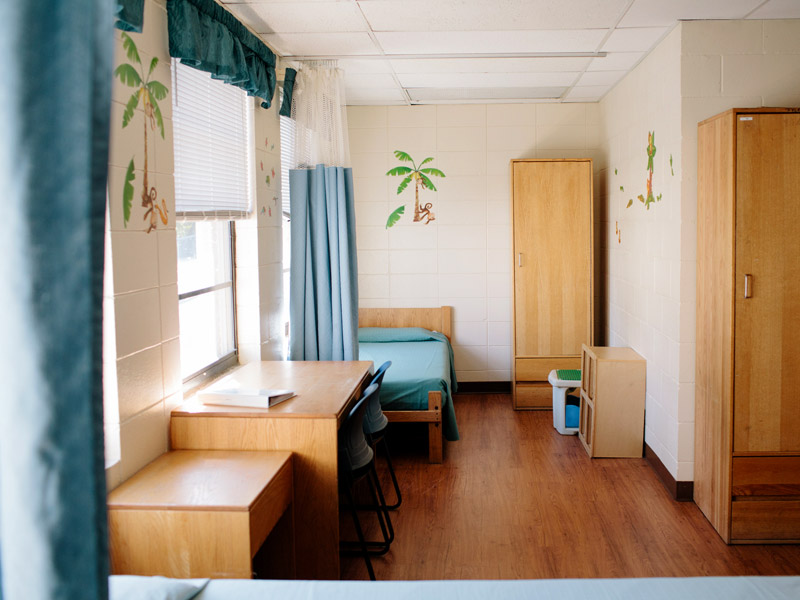Learn about the side effects, causes, signs and symptoms of conduct disorder. Millcreek of Magee Treatment Center offers the best residential treatment and home-based programs for children & adolescents struggling with conduct disorder.
Understanding Conduct Disorder
Learn more about conduct disorder
Young people are known to act out or misbehave. However, a child or adolescent who responds to others in a hostile, aggressive, or overtly violent manner that exceeds what is socially acceptable or age-appropriate may be suffering from conduct disorder. A mental health condition that also involves a lack of remorse or guilty feelings despite consequences for this aggression, conduct disorder sufferers are often met with a number of obstacles in their daily lives, of which also have the potential to be life-threatening.
Some experts in the field of mental health believe that this mental illness is a precursor for a personality disorder that can be diagnosed when a youth is older, however, there are viable treatment options available that can alleviate symptoms of this condition and reduce the risks involved. Failing to help a young person get treatment can lead to increased interaction with the legal system, the development of another mental health condition, substance abuse, and suicidal ideations leading to attempts at suicide. Appropriate and effective care for the symptoms of conduct disorder can help a youth understand the impact of problematic behaviors on his or her life and implement healthy methods for coping with this disorder. What is important to know is that help is available for those who grapple with this destructive mental illness.
Statistics
Conduct disorder statistics
Extensive research on conduct disorder has produced several interesting findings. First, it was realized that those who reside in urban areas are more likely to display signs of this disorder than those who live in rural areas. Additionally, it was discovered that conduct disorder affects more male children and adolescents than female children and adolescents. Lastly, it is estimated that 4% of young people present with behaviors and thought processes that meet diagnostic criteria for this disruptive mental health condition.
Causes and Risk Factors
Causes and risk factors for conduct disorder
The origins of conduct disorder can be best explained through the examination of a person’s genetic history, physiological makeup, and environmental influences. In addition to other risk factors for this condition, consider the following elaborations on these aspects of a person’s life that could increase one’s vulnerability to the development of conduct disorder:
Genetic: Researchers have concluded that conduct disorder is one such mental health condition that can be inherited from one’s family. This conclusion was achieved based on the fact that conduct disorder is often prevalent among individuals from the same gene pool. Additionally, these same researchers have determined that the eventual diagnosis of conduct disorder is even more likely when a person has a first-degree relative with this mental health disorder.
Physical: The presence of a mental health disorder can be caused by changes in a person’s brain or changes in the way in which the brain functions or is structured. Young people with conduct disorder are known to experience certain changes in their brains when this disorder is a factor in their lives. Neuroimaging studies have concluded that those who meet diagnostic criteria for conduct disorder have structural differences in their brains that are otherwise not present in a person without this condition. The frontal lobe, the area of the brain responsible for forming an individual’s personality, is the predominant area of the brain that is structurally different when a person has conduct disorder.
Environmental: Certain circumstances and environmental influences can significantly impact the onset of a mental illness or illnesses when they occur early in a person’s life. For examples, children and adolescents who experienced abuse, neglect, or another type of trauma at a young age have an increased risk for developing symptoms synonymous with conduct disorder. Furthermore, young people who have caregivers that did not utilize consistent parenting methods or who have a history of engaging in criminal activity may display symptoms of conduct disorder at some point. Lastly, research has found that youth who come from a large family or who are bullied during formative years may eventually meet diagnostic criteria for conduct disorder.
Risk Factors:
- Being male
- Family history of conduct disorder or other mental illness
- Personal history of another mental health condition
- Exposure to abuse or neglect
- Being the victim of trauma
- Low socioeconomic status
- Family history of criminal activity
- Residing in an urban setting
- Early institutional living
Signs and Symptoms
Signs and symptoms of conduct disorder
Identifying the signs and symptoms of conduct disorder is necessary so that the young people who are suffering from this illness can receive the necessary care they need. If your child is presenting with any of the following behavioral, physical, cognitive, or psychosocial symptoms, it is imperative that an evaluation by mental health professional is completed and treatment is implemented to cease problematic behaviors and thought processes:
Behavioral symptoms:
- Physical violence
- Breaking rules
- Running away from home
- Bullying
- Truancy
- Uncontrolled acting out
- Sexual assault
- Stealing
- Destruction of property
- Instigative behaviors
- Lying
Physical symptoms:
- Injuries as a result of aggressive behaviors
- Burns due to fire-starting
- Presence of sexually transmitted diseases due to engaging in risky sexual behaviors
Cognitive symptoms:
- Inability to concentrate
- Hindered intellect
- Lack of ability to make good decisions
Psychosocial symptoms:
- Low self-esteem
- No feelings of guilt
- Irritability
- Feelings of grandiosity
- Lack of remorse
- Lack of empathy for others
- Increased agitation
Effects
The effects of conduct disorder
The overtly hostile and aggressive behaviors that often occur when a youth has conduct disorder can lead to various consequences that can be life-changing in a negative way. Additionally, children and adolescents with this mental illness do not experience feelings of guilt after lashing out at others or causing damage to property. This aspect of conduct disorder ultimately increases a young person’s susceptibility to adverse effects that can have a significant impact on his or her life. The following effects of conduct disorder have the potential to occur should the symptoms of this condition remain present in a youth’s life:
- Development of another mental heath condition
- Unplanned pregnancy
- Increased interaction with law enforcement
- Engaging in risky behaviors
- Early onset of sexual behaviors
- Increased risk for the transmission of sexually transmitted diseases
- Poor academic performance
- Disciplinary action at school
- Substance use
Co-Occurring Disorders
Conduct disorder and co-occurring disorders
Children and adolescents who have conduct disorder are known to suffer from additional mental health conditions when appropriate care for this illness is not received. The poor impulse control and mood disturbances associated with conduct disorder can lead to the onset of symptoms of another mental health condition. The listed disorders are examples of such conditions and could require their own treatment in the event a young person begins treatment for conduct disorder:
- Depressive disorders
- Anxiety disorders
- Bipolar disorder
- Attention-deficit/hyperactivity disorder
- Antisocial personality disorder
- Communication disorder
- Oppositional defiant disorder
- Substance use disorders
- Specific learning disorder



